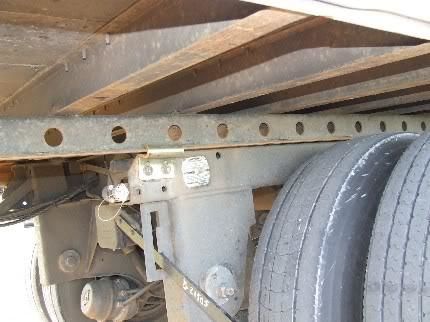Aft or fore doesn't matter, it's the total for the axle group that matters, which is 34K per tandem axle group.
It matters for weight distribution, in this case how much of the pack weight ends up on the front axle. The pack is slightly forward of the halfway point between the forward and fore axle, but 2/3 of the way toward the forward axle compared to the aft rear axle. By using the front and aft axles as the support points, more of the pack weight is applied to the front axle. The fore rear axle is basically directly under the 5th wheel, so it can take up trailer load without unloading the front axle.
Edit: forgot an 's'



